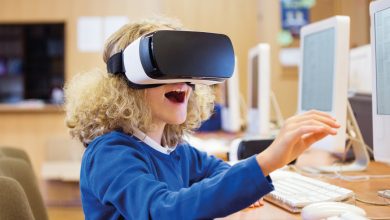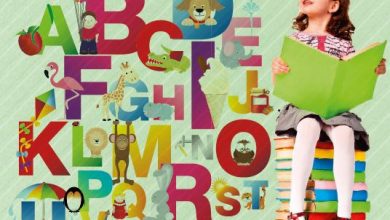 Todd Brekhus, presidente de myON, aborda los beneficios del alumno que utiliza bibliotecas digitales personales para elevar su nivel de fluidez en la lectura en inglés, para fomentar su amor hacia la lectura y apropiarse de sus logros de aprendizaje.
Todd Brekhus, presidente de myON, aborda los beneficios del alumno que utiliza bibliotecas digitales personales para elevar su nivel de fluidez en la lectura en inglés, para fomentar su amor hacia la lectura y apropiarse de sus logros de aprendizaje.
La tarea de hacer que la lectura se vuelva algo más personal para un niño, en particular para el alumno aprendiendo una lengua extranjera, empieza con facilitarles su propia biblioteca personal, especialmente una digital y que contenga una diversidad de libros muy a la mano y de rápido acceso. Así, se abren las puertas a un inicio firme y positivo.
 Varias investigaciones demuestran que es primordial contar con acceso a una biblioteca personal con contenidos adecuados para el individuo. En segunda instancia, está la oportunidad del alumno de conectarse con sus libros y sus habilidades de leer de manera innovadora.
Varias investigaciones demuestran que es primordial contar con acceso a una biblioteca personal con contenidos adecuados para el individuo. En segunda instancia, está la oportunidad del alumno de conectarse con sus libros y sus habilidades de leer de manera innovadora.
Existen distintas herramientas y recursos disponibles para el alumno que lee un libro, con las cuales logra comprender mejor un texto y apropiarse de su aprendizaje. Por ejemplo, los libros digitales pueden contener breves exámenes y repasos al final de la lectura que lo ayuden a establecer una mayor conexión con el texto y con lo aprendido. Los libros digitales disponibles con myON además cuentan con auténticas grabaciones de audio con las cuales el alumno puede escuchar la pronunciación de una palabra según la va leyendo.
La tecnología nos permite éstas y otras herramientas innovadoras con las cuales se profundizan las habilidades de lectura y que además sirven para entender mejor el contenido. Las herramientas en los libros digitales myON, como los íconos para resaltar textos y tomar notas, permiten al alumno hacer anotaciones ‘dentro’ de su libro digital y con ello transformarlo en su copia personal.
Dichas anotaciones sirven para aprender y retener más información. No hay dos anotaciones en un libro que se parezcan. Cada vez que el alumno regresa al libro y las repasa, afianza mejor su comprensión del texto. Esta biblioteca digital personal y expansiva – con su amplia variedad de contenido en distintos tipos o géneros de lectura, ya sea de ficción o no ficción, abre las puertas a todo un nuevo mundo para cada individuo.
Las herramientas tecnológicas más recientes en el ámbito de los libros digitales también le permiten al alumno compartir sus anotaciones con compañeros o maestros, un aspecto que fomenta la colaboración que se extiende mucho más allá del salón de clase o de la escuela, hacia sus hogares y familias, incluso hasta sus comunidades. La lectura en colaboración es fundamental para ayudar al alumno bilingüe a avanzar. Así, cuando un maestro asigna un libro, el alumno puede compartir sus textos resaltados, ilustraciones o anotaciones, ya sea con un pequeño grupo o incluso con toda la clase, y comparte sus ideas en conjunto. Es un escenario donde se crea un ecosistema de lectura realmente dinámico que favorece el crecimiento y permite que las ideas fluyan libremente.
La importancia del contenido de tipo no ficción
La lectura de contenidos de tipo no ficción es otro elemento crucial para promover el amor por la lectura y el aprendizaje.
 A los niños les dan curiosidad las cosas reales y legítimas – lo escurridizo, por qué truena segundos después de la luz o la geografía – y todo este tipo de información se ve en el mundo de la no ficción. Los trabajos de no ficción abren las posibilidades de conocimiento personal para el pequeño lector y pueden ofrecerse en libros de ilustraciones, novelas gráficas u otras formas interesantes que hacen que el contenido cobre vida. El contenido de tipo no ficción es especialmente relevante para profundizar niveles de comprensión y conocimiento en temas como la historia, la ciencia y las matemáticas.
A los niños les dan curiosidad las cosas reales y legítimas – lo escurridizo, por qué truena segundos después de la luz o la geografía – y todo este tipo de información se ve en el mundo de la no ficción. Los trabajos de no ficción abren las posibilidades de conocimiento personal para el pequeño lector y pueden ofrecerse en libros de ilustraciones, novelas gráficas u otras formas interesantes que hacen que el contenido cobre vida. El contenido de tipo no ficción es especialmente relevante para profundizar niveles de comprensión y conocimiento en temas como la historia, la ciencia y las matemáticas.
Apropiarse del aprendizaje
Un recurso realmente importante para el alumno lector de libros digitales es la capacidad de ver y medir su propio crecimiento a nivel lectura. Avanzan, aprenden más y también van viendo cómo se eleva su gráfico de barras. En esta era de los videojuegos a los niños les interesa medir su progreso y buscan acceso a herramientas parecidas a las que se usan hoy en día en el campo de la educación para ver su propio crecimiento. Los gráficos de barras les parecen sumamente alentadores, les inspiran a seguir adelante y a asumir responsabilidad sobre su lectura y conocimiento en general. Según investigaciones, el alumno motivado lee con mayor frecuencia y durante más tiempo.
myON considera firmemente que el alumno debe asumir responsabilidad sobre su aprendizaje. La gráfica de crecimiento personal es fundamental para ir viendo cómo van sobresaliendo. Aparte, es un éxito que pueden compartir con la familia. Claramente el enfoque principal de myON es brindar el contenido más indicado para cada niño. Nos dedicamos constantemente a extender nuestra biblioteca de libros digitales para atraer a todo tipo de lectores entre las edades de 3 y 18 años.
Nuevamente, aquí la importancia radica en la selección. La biblioteca de myON está conformada por más de 8 mil títulos, con lo cual cada niño cuenta con una biblioteca digital personal de contenido acorde con sus intereses, su nivel de libros y su capacidad de lectura. Los elementos clave de myON y donde más nos esforzamos por mejorar y brindarle más al alumno y al educador es en:
- * La selección
- * La capacidad de personalizar un libro digital con las anotaciones del lector
- * La oportunidad para el alumno de compartir y colaborar con sus compañeros y maestros
- * Medir y dar seguimiento a su éxito personal de lectura y su conocimiento
El avance del alumno bilingüe
Investigaciones señalan que el acceso a libros digitales puede acelerar el crecimiento de la lectura con el paso del tiempo. Por lo anterior, resulta todavía más importante para el alumno bilingüe y para quienes estudian el inglés como segunda lengua, tener acceso a un entorno personalizado de lectura, especialmente dado que en el caso de la mayoría, no han sido expuestos a mucha fluidez en cuanto a lectura oral, a diferencia de quienes tienen el inglés como su lengua materna. Sin una conexión fuerte a la tradición oral de un idioma extranjero, es complicado para un alumno conectarse con la lectura y todavía más complicado dominar la capacidad de leer con fluidez.
Otro aspecto complicado para los alumnos del inglés como segunda lengua es en el vocabulario. Por eso la capacidad de audio en los libros digitales es de suma importancia, para escuchar un libro cuando resulte necesario. En muchas instancias incluso sirve escuchar los libros escritos en su propia lengua materna. myON también está avanzando en permitir al alumno crear sus propios listados de vocabulario que le sirvan para expresar mejor sus ideas en torno a un texto.
La tecnología realmente ha transformado la forma en que leen los alumnos de una lengua extranjera. Por ejemplo, myON está colaborando con una escuela en Turquía donde uno de sus alumnos llegó a leer 200 libros con myON. Naturalmente, sus calificaciones en lectura se dispararon y al año siguiente, no solamente subió tres niveles en su libro de “Oxford University”, sino que además sacó mejores puntuaciones en otros exámenes de lectura. De haber leído libros impresos, su progreso podría haber sido mucho menor.
La tecnología tambin simplifica el acceso a libros y a herramientas que faciliten la lectura para quienes estudian inglés como lengua extranjera.
Con libros y herramientas tecnológicas el alumno se siente más alentado, porque los libros digitales no limitan al lector. No hay fechas de devolución o entrega y varias personas pueden leer un libro al mismo tiempo. El alumno puede compartir sus anotaciones y reflexiones en distintos dispositivos y quienes cuenten con dispositivos con acceso al internet también tienen la posibilidad de descargar libros por ese medio.
Recomendaciones para los maestros
Enseñar a leer a alumnos en una segunda lengua no es tarea fácil. Sin embargo, la tecnología nos permite la capacidad de abordar un texto en un id- ioma que no sea el propio, leer, escuchar y repetir las palabras con confianza.
El maestro dedicado a la enseñanza de una lengua extranjera puede ayudar a sus alumnos de muchas formas, apoyándolos a aprender y fortalecer su conocimiento, como por ejemplo:
- Encontrar excelente contenido de lectura— para que el alumno tenga un buen comienzo, ofrézcale a cada uno más de 500 libros adecuados a su nivel y que sean de su legítimo interés. Es aquí donde la tecnología es clave. Una biblioteca de libros digitales permite al maestro adaptar sus listas de lectura a las necesidades particulares de cada alumno o para grupos completos. Para captar la atención e interés de todos, debe tratarse de contenido vasto, diverso y personal.
- Audio con texto— Idealmente todo libro digital debe contar con un grabación de audio con texto que se va resaltando según va avanzando el audio de la lectura.
- Permitir al alumno darle seguimiento a su avance y crecimiento— Los alumnos se interesan por mejorar y necesitan conocer su progreso para seguir creciendo. Las herramientas de seguimiento al progreso en la lectura le sirven al alumno para ver su avance.
- Colaboración— Al colaborar, compartir y conectarse con sus compañeros a través de un libro, el alumno no solamente se siente motivado, sino que también es una gran forma de usar la tecnología para personalizar la lectura.
- Adoptar la tecnología — Los sistemas de lectura basados en la tecnología, con sus extensas bibliotecas digitales y sus herramientas de apoyo pueden ser excelentes tanto para un bibliotecario como para un maestro. Cuando el educador adopta todo lo que estos sistemas llegan a ofrecer, no hay límite en cuanto a la manera de usarlos para ayudar al alumno a sobresalir.
Acerca del autor: Todd Brekhus es el presidente de myON, un entorno personalizado de lectura que contiene más de 8 mil títulos de libros digitales provenientes de más de 55 casas editoriales que apoyan a más de 5 millones de alumnos en todo el mundo.
Todd Brekhus, president of myON, discusses the benefi ts of students using personal digital libraries to increase English reading fl uency, raise their love of reading and take ownership over their learning success.
Making literacy more personal to children, especially for students learning a foreign language, begins with providing them with their own personal library. When a student is able to have his own personal library—especially one that’s digital with an array of books at their fingertips for fast access—that’s a strong and positive beginning.
Research shows that having access to a personalized library of content thats fit for individual students is paramount. Second is the opportunity for students to connect with the books they read and to the skills of reading in innovative ways.
There are different tools and resources available to students as they read a book either to help them with comprehension or to help them take more ownership of their learning. For example, digital books can provide short quizzes and exercises at the end of a book to help students make stronger connections to what they are reading and learning. The digital books we have with myON also have authentic audio recording so students can hear how a word sounds as they read.
Technology affords us these and other new tools to deepen learners’ reading abilities and their understanding of content. Tools in myON’s digital books, such as highlighters and note-taking icons, allow students to write “inside of the books” and turn these digital books into their own personal copies.
These notes are how they learn and retain more information— no two notes in a book are the same. Each time a student returns to the book and reviews those notes, he has an even stronger understanding of that book. This expansive, personal digital library—with its variety of content across different genres or typesfiction or nonfiction opens up a whole new world for each student.
The latest technological tools in digital books also allow students to share their notes with classmates and teachers, encouraging collaboration among learners and educators that extends beyond class and the school day to the home, with students’ families, and even within their communities. Collaborative reading is key to helping bilingual students advance. So, when a teacher assigns a book, students can share their highlights, drawings and notes from the text, allowing a small group or an entire class to see ideas collaboratively. This scenario creates a truly dynamic ecosystem of literacy that fosters growth and allows ideas to flow freely.
Importance of Non- Fiction Content
Reading non-fiction content is also critical in fostering a love of reading and learning.
Kids are curious about things that are true and real—things that crawl, why thunder comes seconds after lightening, about geography — all kinds of things in the non-fiction world. Non-fiction works open up a lot of personal learning opportunities for early readers and can be offered as picture books, graphic novels or other engaging ways that make content come alive for kids. Nonfiction is especially important to deepen levels of understanding and comprehension for subjects such as history, science and math.
Ownership of Learning
A really important resource for students who read digital books is the ability to see and measure their reading growth. As they read and learn more, they can watch the bar graph climb. In this gaming age, kids are interested in how they’re doing and they need access to tools that are similar to what we use today in education to see their growth. Watching that bar graph rise is incredibly uplifting and inspires kids to continue and take greater ownership of their reading and overall learning. According to research, motivated learners read more frequently and for longer periods of time.
myON believes strongly in students’ taking ownership of their learning. The personal growth chart is essential for every student to see how he excels. Plus, students can share this success with their families. Clearly, myON’s main focus is providing the right content for every child. We are constantly growing our library of digital books to appeal to all types of readers, ages 3 to 18 years.
The importance here, again, is choice. With more than 8,000 titles in myON’s library, every child has a personal digital library of content matched to his interests, levels of books, and reading ability. The key elements of myON, and what we strive to improve and provide for learners and educators, are:
- * Choice
- * An ability to personalize a digital book with the student’s own notes
- * The opportunity for learners to share and collaborate with their peers and teachers
- * Tracking and measuring their own success in reading and learning
Advancing Bilingual Students
Research states that access to digital books can accelerate reading growth over time. Therefore, it is even more important for bilingual students, and those learning English as a foreign language, to have access to a personalized literacy environment, especially since most have not had exposure to a lot of oral reading fluency like native speakers. Without a strong connection to the oral tradition to a foreign language, such as English, its difficult for a student to connect with reading and even more difficult to master the ability to read fluently.
Vocabulary is another area where learners of English as a foreign language (EFL) often struggle. That’s why audio capabilities in digital books are critical. They give a student the choice to have books read aloud to him if need be. The student can hear the book and then can read the book over again. In many cases, learners can even hear books written in their native language. We’re also advancing myON to allow students to create their own vocabulary lists. This lets students better articulate their ideas around a text.
Technology has truly transformed how students learning a foreign language can read. For example, myON is working with a school in Turkey, where a student read 200 books with myON. His reading scores skyrocketed. The next year, he rose three levels in his Oxford University book and scored higher on other reading tests. Such progress may have been much slower by reading print books.
Technology also makes it easier to gain access to books and to have tools to ease EFLs into reading. With technology-driven books and tools, students feel emboldened. That’s because digital books don’t limit readers. There are no check-in or checkout deadlines. Multiple students can read the same book at the same time. Students can share notes and thoughts across devices. Students with web-enabled devices can download books with access to the Internet.
Advice to Teachers
Teaching reading to students learning a foreign language is not easy. However, technology affords us the ability to have a confident approach to non-native language text—to read it, listen to it, hear it, and repeat the words and the language.
Teachers of students learning a foreign language can support their students and bolster their learning in many ways, including the following:
- Find great reading content—Provide every student with 500 or more books at their level and books that interest them to get students off to a great start. This is where technology is key. A library of digital books can help teachers customize reading lists for every student in the class, or for reading groups. But, the content must be vast, diverse and personal to grab the students’ attention and interest.
- Audio with text—Ideally, every digital book should have human recorded audio with text highlighting to go along with that audio.
- Let students monitor their growth— All kids want to improve and they need to see if they are getting better so they can continue to grow. Provide students with tools to monitor their own growth while they are reading so they can see their improvement.
- Collaboration—Being able to collaborate, share and connect with classmates through a book motivates students and is a great way to use technology to personalize literacy.
- Embrace technology— Technology-based reading systems, with their extensive digital libraries and supportive tools, can be great for a librarian or for a teacher. When educators embrace what these systems can offer, there’s no limit to how they can use them to help students excel.




